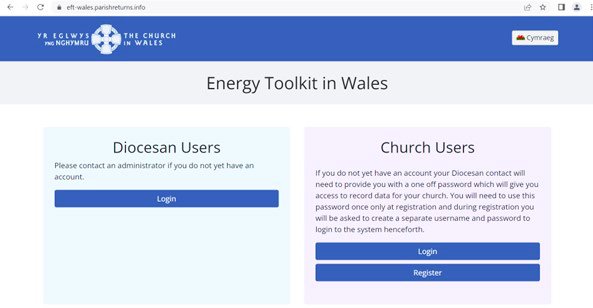New tool helps churches measure their carbon footprint

Churches are able to measure their carbon footprint with a new online tool.
The Energy Footprint Tool is a quick and easy way for churches to find out how much carbon they use each year, helping them plan action to reduce and offset it.
Clerics and volunteers can now input data from their annual energy bills and the tool instantly calculates the carbon footprint of their church. With such baseline information, plans can be made locally to encourage mitigation measures for each church in context, while high energy users can be identified and targeted for further help.
The tool was launched by the Archbishop of Wales, Andrew John, at the Church in Wales’ Governing Body meeting last week, before a live demonstration.
Archbishop Andrew encouraged all churches to use it. He said, “Our Energy Footprint Tool is vital to us in reaching our net zero ambition as a Church. Not only does the tool instantly calculate the carbon footprint of any church building when its energy-use data is entered, it will also enable us to identify and target our high energy-use buildings more effectively. I urge all clerics and volunteers with responsibility for utility bills to use the Energy Footprint Tool and demonstrate that collectively, we care about our use of our God-given resources.”
Each church will receive a unique password, via email from the Church’s Climate Change Champion, Dr Julia Edwards, to enable them to register and use the Energy Footprint Tool. Once they have that, they can access the Tool and submit their information.
Clergy or volunteers can also enter data for separate buildings, such as church halls, when they have their own separate utility bills.
Dr Edwards says, “Once you have used the EFT and know your carbon footprint, you will be able to compare your church’s energy use with other similar-sized churches, include the footprint information in any Eco Church award application or funding bid, and the tool will help you in targeting specific net-zero actions and carbon-reduction measures for your church.”
